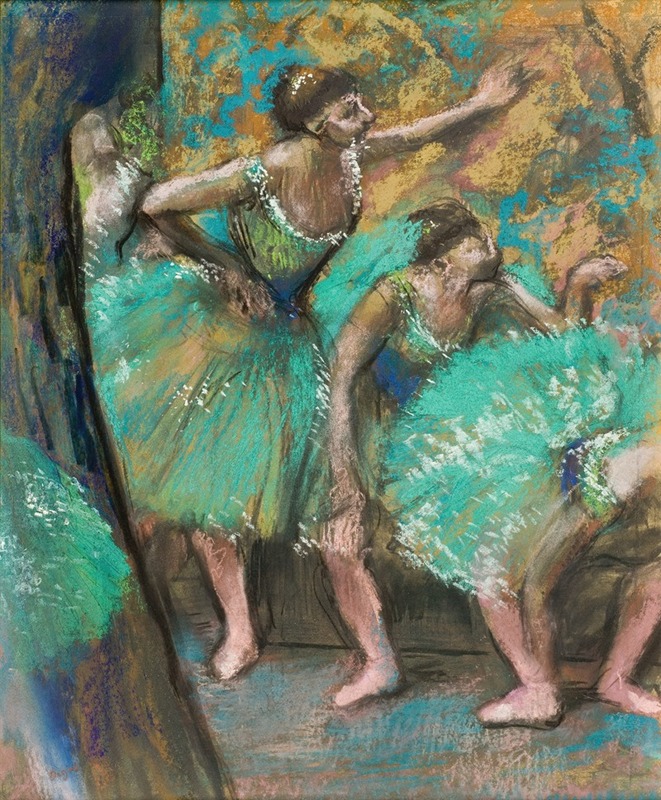
The Dancers
A hand-painted replica of Edgar Degas’s masterpiece The Dancers, meticulously crafted by professional artists to capture the true essence of the original. Each piece is created with museum-quality canvas and rare mineral pigments, carefully painted by experienced artists with delicate brushstrokes and rich, layered colors to perfectly recreate the texture of the original artwork. Unlike machine-printed reproductions, this hand-painted version brings the painting to life, infused with the artist’s emotions and skill in every stroke. Whether for personal collection or home decoration, it instantly elevates the artistic atmosphere of any space.
Edgar Degas, a prominent French artist associated with the Impressionist movement, is renowned for his depictions of dancers, which constitute a significant portion of his artistic output. One of his notable works, The Dancers, exemplifies his fascination with the world of ballet and his innovative approach to capturing movement, light, and the human form.
Degas created numerous paintings, pastels, and sculptures of dancers, often portraying them in candid, behind-the-scenes moments rather than in formal performances. The Dancers reflects this approach, as it focuses on the intimate and unglamorous aspects of a dancer's life. The painting showcases his mastery of composition, as well as his ability to convey the physicality and grace of ballet. Degas often depicted dancers stretching, rehearsing, or resting, emphasizing their dedication and the laborious nature of their craft.
In The Dancers, Degas employs a dynamic composition, using diagonal lines and asymmetry to create a sense of movement and spontaneity. His use of color and light is particularly striking, as he often experimented with bold, unconventional color palettes to highlight the textures of the dancers' costumes and the interplay of light on their bodies. Degas was also known for his innovative use of pastels, which allowed him to achieve a soft, luminous quality in his works.
The painting reflects Degas's interest in Japanese prints, which influenced his use of cropping and unusual perspectives. He frequently positioned his subjects off-center or partially out of frame, creating a sense of immediacy and intimacy. This approach can be seen in The Dancers, where the composition draws the viewer's eye across the canvas, capturing the fleeting nature of the moment.
Degas's works on dancers were not only artistic studies but also social commentaries. Ballet during the 19th century was a demanding profession, and many dancers came from working-class backgrounds. Degas's depictions often reveal the tension between the elegance of ballet and the harsh realities faced by the performers.
While the exact date of The Dancers is not always specified, it is part of a broader series of works created by Degas throughout his career, particularly during the late 19th century. Today, his paintings of dancers, including The Dancers, are celebrated for their technical brilliance and their ability to capture the beauty and complexity of human movement. Many of these works are housed in major museums and collections around the world, where they continue to be admired by art enthusiasts and scholars alike.


















